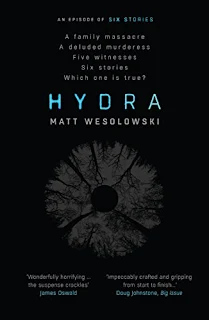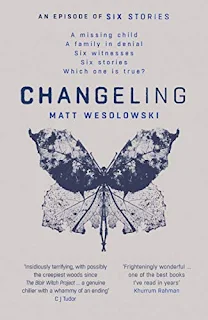Manchester International Festival
Great Northern Warehouse
On Sunday 4th July, I was at Great Northern Warehouse to watch The Global Playground by Theatre-Rites, one of the shows at this year’s Manchester International Festival. This was a big event for me, as not only was it the beginning of this year’s festival, but it was also my first piece of live theatre since February 2020. I’ve been reviewing productions for this blog and for North Manchester FM throughout lockdown, but these have all been digital shows. Sunday marked my first time in a theatre space since before the first lockdown began (and I want to give credit to the staff at Great Northern Warehouse and the Manchester International Festival volunteers for the brilliant work they’ve done to make the space seem welcoming, comfortable and safe).
My radio review of The Global Playground will be going out on North Manchester FM this week, and on Hannah’s Bookshelf later this month, but here’s the blog version...
 |
| Photo credit: Tristram Kenton |
The Global Playground is a family-family production by acclaimed children’s theatre company Theatre-Rites. The show is premiering at Manchester International Festival and, alongside the live shows, there will also be a film version of the show available online.
The phrase ‘family-friendly production’ might not be one that you associate with Manchester International Festival. The festival prides itself on featuring challenging, ground-breaking and provocative art from internationally acclaimed writers, producers and performers. Perhaps you might find it hard to imagine that the description ‘challenging, ground-breaking and provocative’ could apply to a show aimed at eight-year-olds and up. And yet, that is exactly the kind of work that Theatre-Rites have been producing for the past quarter of a century (this year marks the company’s twenty-fifth birthday).
The Global Playground is a dance performance, featuring a little bit of live musical performance, a little bit of filmed footage, and a little bit of puppetry. It’s performed in the round, with the stage transformed into a film studio. Sean (played by Sean Garratt – each of the performers uses their own name in the show) is trying to make a dance film and is waiting for his performers to arrive. We get a little glimpse of puppetry at the beginning, as Sean introduces us to his lightly anthropomorphized camera, to which he speaks throughout.
But it’s not long before the human performers start to arrive on stage, each signalling their arrival with a dance performance. First is Annie (Annie Edwards), then Jahmarley (Jahmarley Bachelor), and then Kennedy (Kennedy Junior Muntanga) and Charmene (Charmene Pang). As the dancers arrive, tensions start to emerge. Sean is stressed about getting his film made – the film’s composer (Ayanna Witter) hasn’t been able to come, and has sent an alternative musician in her place (Merlin Jones). He is so distracted when Annie arrives that she almost walks off the set when he ignores her. And Kennedy was supposed to be performing a duet with another dancer – Thulani (Thulani Chauke) – who hasn’t been able to make it.
While this last detail fits well with the stress and tension of the opening section of the show – where Sean moves around the stage, attempting to set up his camera, shouting at his production assistant, and worrying about whether the project will come together – it was actually added to the show when real-life intervened. South African dancer Thulani was unable to travel to Manchester to perform in the show, and so his duet performance with Kennedy is achieved through the use of projected film mimicking a video call. Although this is a necessary response to real-life circumstances, it was integrated really well into the performance, with the ‘video call’ conceit (complete with glitches and buffering echoed through the sharp jerky movements of a frustrated Kennedy on stage) drawing attention to some of the themes that will subtly emerge through the production as a whole.
The opening dance performances – coupled with Sean’s gently comedic performance as the slightly highly-strung filmmaker with a job to do – feel a little fragmented, as though the cast are somewhat hesitant in bringing their individual performances together. That’s not to say the opening isn’t joyful and exuberant, with high-energy solo performances merging into pairings and ensemble moves. However, the vague feeling of hesitancy about the ensemble performances are building the audience up for the overarching theme of what we’re watching.
 |
| Photo credit: Tristram Kenton |
For the adults in the audience, this fragmented feeling might lead to a bit of uncertainty. But I wonder if the children understood better what was going on. Theatre-Rites are leading proponents of challenging theatre for children – they believe in approaching theatre for younger audiences with the same seriousness and depth as productions for adults. Nevertheless, there was clearly no desire to baffle or bemuse their younger audience members. While the choreography (by Gregory Maqoma) and performances were striking, and designed to push at the limits of youthful attention spans, the story here will have been familiar ground for the kids. Sean wants to make a film, but he and his friends keep squabbling about things – they’ll only be able to achieve what they want to achieve when they put their disagreements behind them and work together.
And, indeed, that is what The Global Playground is about. This aspect of the story really comes to the fore when Sean is sent a surprise package: his ‘American funders’ have decided that the film needs a puppet, and so they’ve sent him a puppet. Garratt’s puppetry skills were put to good use with the arrival of the fluffy, bright orange addition to the cast (including performing a song, which is certainly worthy of respect!). However, what really struck me when the puppet came out of the box was the wave of recognition from the kids in the theatre. It was like they knew immediately what this orange thing meant, and there was a really heart-warming immediacy in their reaction to it. It says a lot about Garratt’s abilities, but also about puppetry more widely, that the children in the audience related to it straightaway. (I’m not going to lie… this adult did a bit as well!)
 |
| Photo credit: Tristram Kenton |
The Global Playground is a show about the connections we make with one another, and how we can achieve our ambitions when we collaborate with others – including people of different backgrounds – and when we focus on a shared goal. This aspect of the story comes together in an exhilarating celebratory performance towards the end, which allows percussionist Merlin Jones to really drive the mood and energy alongside the dancers.
In addition to this, this is a show about the ways in which the circumstances of the modern world (the very modern world – the spectre of lockdown haunts the edges of this production in subtle and complex ways) can both augment and frustrate our desire to make connections with others. Ingrid Hu’s design – with Sue Buckmaster’s direction – make the film stage into an interactive space, where the tools of filmmaking (tripods, lights, reflectors) are repurposed and integrated into the dancers’ performances, as props, costumes and stage sets. Like Sean’s anthropomorphized camera, even the most blankly material object becomes humanized as the dancers reimagine them.
There is a dark side to this, as the show takes on a more ominous tone. Dry ice that was sprayed onto stage by Annie in a fit of gleeful mischief becomes a fog; lightboxes that had been tossed around in fun become hiding places, and the camera re-emerges as a surveillant monster, red eyes seeking out the cowering dancers. While Annie, Jahmarley, Kennedy and Charmene survive this – of course – a sense of doubt lingers even in the final celebration of a job well done, when we watch Sean’s film and find that his camera has been actively editing the footage he’s recorded. The film we see is moving and triumphant… but it’s not actually what we’ve experienced in real-life.
And it’s in this that The Global Playground is at its most thought-provoking. I don’t know whether the children in the audience will have made the direct connection between the ambiguous character of the camera, the subtle questioning of digital vs real-life connections, and their (for most) recent experiences of online learning and family-time-via-Zoom, but it is to Theatre-Rites’ credit that they offered this subtext to their audience, to inspire and provoke the imaginations of both young and… well… not so young.
 |
| Photo credit: Tristram Kenton |
Of course, as the show’s title suggests, The Global Playground is very much about fun and play as well. The energetic and joyful performances by the dancers, as well as a gently comedic turn from Garratt, make this show a lot of fun to watch. Particularly in the second half of the show, it’s very easy to get swept up in the movement and sounds – with Maqoma’s choreography switching seamlessly between styles and tempos – and in the impressive integration of props and set-dressing by the performers.
This is very much a ‘family friendly’ show – but not the one you might expect. It’s intelligent, stylized and laden with subtext, but, in my opinion, Theatre-Rites have pulled off the impressive feat of making this enjoyable for a mixed-age audience, without ever talking down to the younger members or giving sly winks to the adults over their heads.
Overall, I enjoyed The Global Playground. It’s a surprising and unexpected production that is at once exuberant and thought-provoking. The show is suitable for over-8s, but I’m not sure there’s really a maximum age!
The Global Playground is on at Great Northern Warehouse until Sunday 18th July, as part of Manchester International Festival. It will also be presented digitally, as a film version. For more information, and for tickets, please visit the Manchester International Festival website.


































